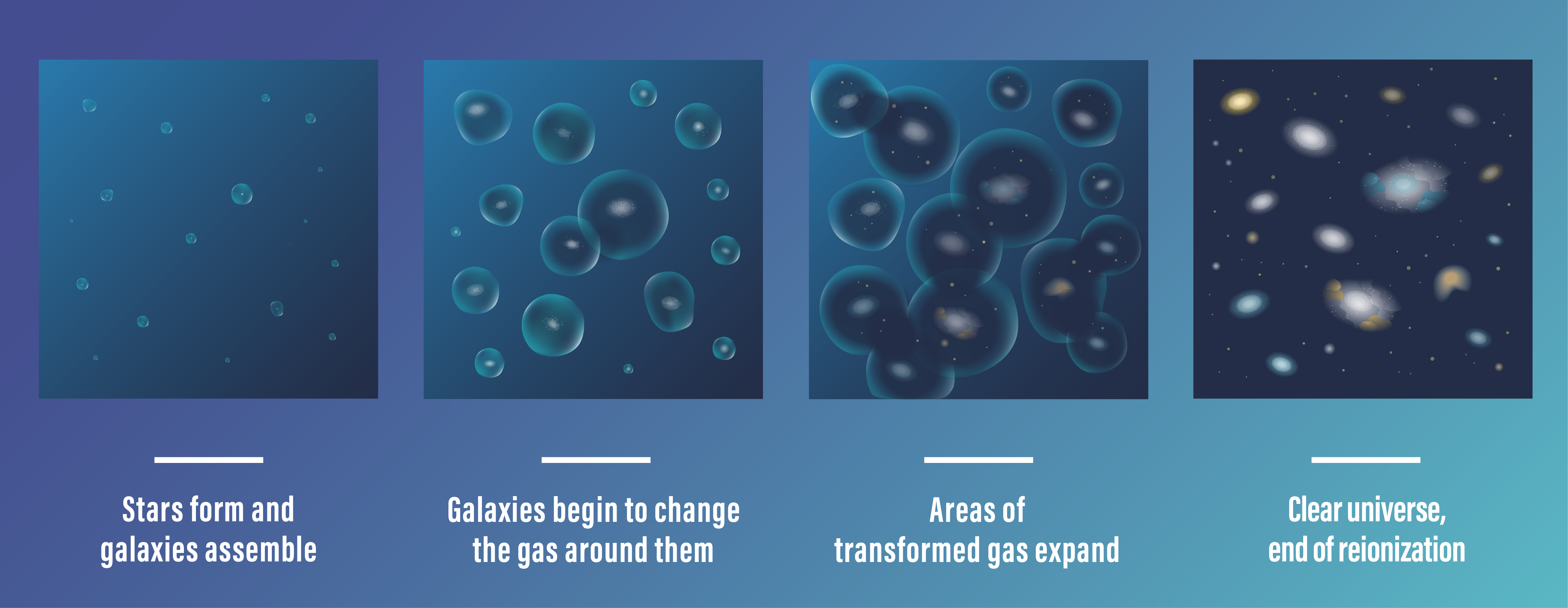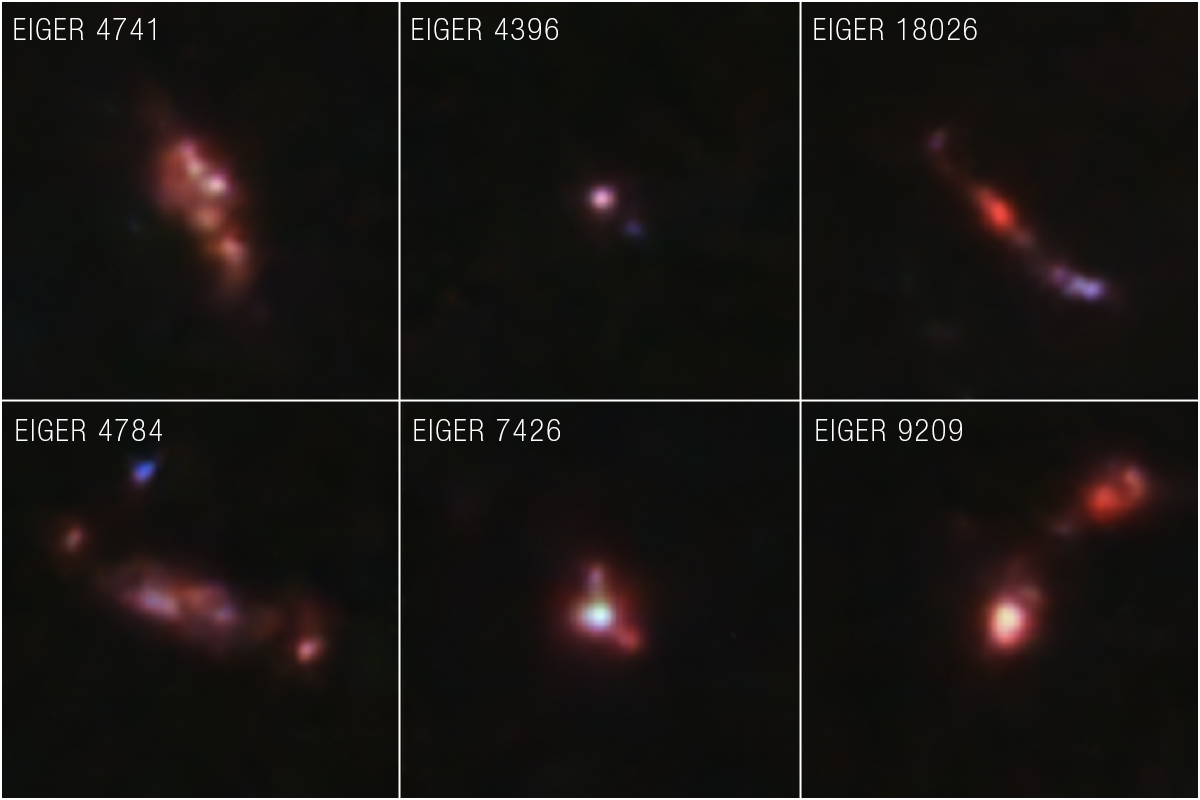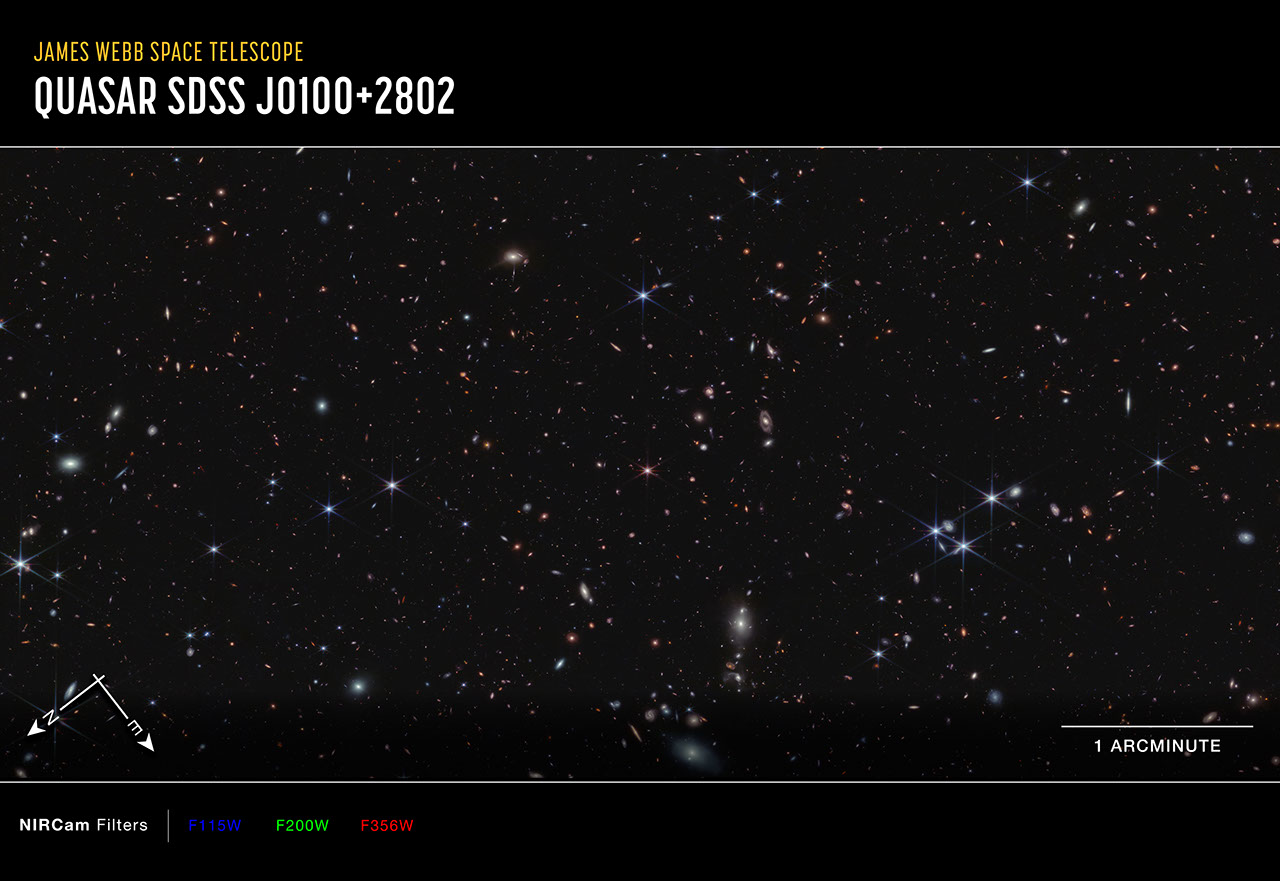1 min read
Conditions During the Era of Reionization (Illustration)

More than 13 billion years ago, during the Era of Reionization, the universe was a very different place. The gas between galaxies was largely opaque to energetic light, making it difficult to observe young galaxies. As stars and young galaxies continued to form and evolve, they began to change the gas around them. Over hundreds of millions of years, the gas converted from neutral, opaque gas to ionized, transparent gas.
What allowed the universe to become completely ionized, leading to the “clear” conditions we see in the present-day universe?
Researchers using the James Webb Space Telescope found that galaxies are overwhelmingly responsible toward the end of this period. Read about their findings.
- Release DateJune 12, 2023
- Science ReleaseNASA’s Webb Proves Galaxies Transformed the Early Universe
- CreditIllustration: NASA, ESA, CSA, Joyce Kang (STScI)
Related Images & Videos

Quasar J0100+2802 (NIRCam Image)
There are more than 20,000 galaxies in this field. This James Webb Space Telescope view is found between the Pisces and Andromeda constellations. Researchers using Webb anchored their observations on quasar J0100+2802, an active supermassive black hole that acts like a beacon....

Distant Galaxy Samples Near Quasar J0100+2802 (NIRCam Image)
The James Webb Space Telescope has returned extraordinarily detailed images and spectra of galaxies that existed when the universe was only 900 million years old. “In Webb’s near-infrared image, we can see structures in every individual galaxy that the telescope detected,”...

Quasar J0100+2802 (NIRCam Compass Image)
This image centered on quasar J0100+2802, captured by Webb’s NIRCam (Near-Infrared Camera), shows compass arrows, scale bar, and color key for reference. The north and east compass arrows show the orientation of the image on the sky. Note that the relationship between north and...
Share
Details
Laura Betz
NASA’s Goddard Space Flight Center
Greenbelt, Maryland
laura.e.betz@nasa.gov
NASA, ESA, CSA, Joyce Kang (STScI)






























